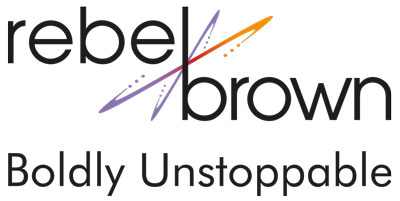We’re all taught to seek the best answer. To business issues, professional challenges, personal stuff.
We also have a need for speed when it comes to finding that answer. After all, finding the answer as quickly as possible is how we win. Right?
Not really.
Our First Answer is Rarely Our Best Answer
That’s because the initial answers we find are based on what we expect. Rather, what we’ve been trained to expect.
We tend to stop at the limits of what is comfortable for us. Our minds look for what’s expected and when it gets there – it stops and sits in the warm fuzzies of that answer.
That first answer is based on our past experiences and the expectations we’ve defined based on attention and those experiences. It’s rarely our best answer.
That answer is defined within a box, based on tip-of-the iceberg information and beliefs. That’s not a step forward into fresh, innovation solutions.
Our best answers live in the undiscovered ideas and concepts we haven’t even thought of yet.
To find our best answers, we need to step outside of our experiences and expectations. We need to pay attention to finding the truths hidden beneath our dependence on what we’ve learned in the past. We need to train ourselves and our teams or associates to dig deeper. To keep asking questions that take us beyond what we expect and know, into the realm of the new and unexpected. That’s where the best answers live.
We can thank our minds for the fact that our first answer is rarely our best answer.
Thanks to mind science, we can control our world and find the best possible answer. Here are some ideas how to do just that.
Beyond That First Answer
How do you go beyond that first answer? How do you breakthrough that box that’s been created in your mind? Find the nuggets of innovation hidden below the surface?
It’s easy. Keep asking questions. Once you get to that first answer, keep going!
Ask things like:
- What else is a solution? Brainstorm every single option you can come up with. And then brainstorm some more. Just keep asking, “What else? What else? “
- What else can we add to this idea? Once you have a list of solutions, start adding to them, bundling them together, creating innovation and new ideas out of all that new fodder. Keep asking,”What else?”
- What else do they do in other markets? don’t forget to, “What else?” using ideas and answers from other industries, other markets, other places on the planet. Just keep looking for it, for “What else?”
- What else can I do? What else have others done? Think you’ve pushed the boundaries far enough? Keep pushing. Just keep asking yourself, “What else?”
The key is to simply keep pushing past the box of answers we already know, and into new thinking. The farther out of the box we go, the more innovative we become.
The Bottom Line
The first answer is rarely the best answer. That first answer is like a kneejerk response to that hammer, it’s innately expected and driven as a behavior by that expectation.
To find our best solutions, we need to move beyond that first answer and into new thinking and fresh ideas. That’s why it’s a great technique to simply keep asking, “What else?” Dig deeper and deeper until you find that powerful idea, buried beneath all those knowns that get in the way of progress.






2 Comments
John Bennett
February 16, 2015 - 8:54 amQuoting: “Our best answers live in the undiscovered ideas and concepts we haven’t even thought of yet.” Absolutely true!!! A few thoughts:
1. I agree totally that you must sell-assess / ask questions routinely. But I’ve some thoughts on your four “What else” questions to get to those best answers. The first one, brainstorming, is of course a must – done with motivation to identify new ideas with no (or very few) boundaries / constraints. The second one is key; often one of those crazy brainstormed ideas will become real through massaging from the list. For the third, adapting from other unrelated applications is great, often coming when least expected; but it cannot or should not be counted upon for the best solution. For the last one, pushing the boundaries happens in brainstorming where there are few or no boundaries. “What else have others done?” is part of the “considerations” (http://johncbennettjr.com ) done early in the “coming up to speed” efforts.
2. The facilitation necessary for these ideas to become habits starts in K-?? education. All too often, assignments are given seeking application of textbook example or classroom example thinking. Too many of my college engineering students believed this was sufficient preparation for a successful career: “Tell us what we need, Dr. Bennett, to be successful.” I remember a student who came to my office seeking a higher grade on a recently returned exam. After pointing out the missing parts of answers (and thus no extra points), the student said “So you want us to think in building our answers” and I replied “YES I DO!” To the student’s credit, that’s what happened in future exams – higher grades too!
rebel brown
February 16, 2015 - 10:28 amHi John
Great to meet you. And Im so glad you felt comfortable enough to promote your own site here on my blog. Love it that people I haven’t met feel they are at home here on rebelations!
I totally agree with your point 2… which is why I have a kids non profit focused on teaching our next generation about the power of their minds and how to think out of the box and toward their own uniqueness. If we want to change the world, we need to start with the kids and give them the gift of knowledge – beyond our limited cultural programming.
As for your comment about not counting on unrelated applications for the best answer – I disagree. Ive created over 200 strategies fo consulting clients, and the BEST innovation and ideas came from unrelated industries! Why? Because if we stay in our industry we stay in the same box of knowledge and “givens.” which are the kiss of death to innovation. Its not innovation if everyone in your industry knows it and is about to do it! Its part of the mindware that we all create by focusing on what we know and what we experience – which then serves to define what we select as our reality and our possibilities. ONLY when we move past that limiting and boxed in mindware and into totally new areas of learning and thinking can we hope to find the best answers and the innovation they bring. try it -I’ve used it for years and the results are UNSTOPPABLE!
Thanks again for stopping by and be Unstoppable out there!